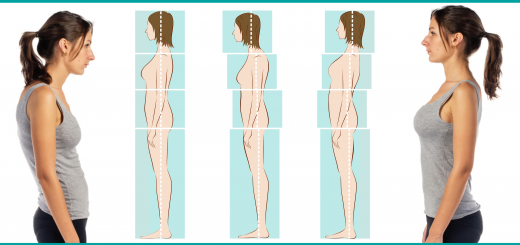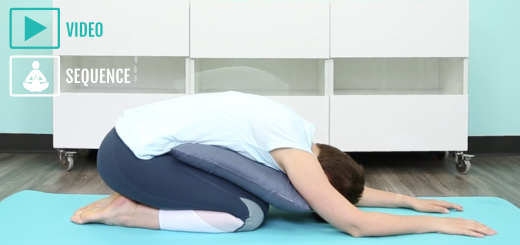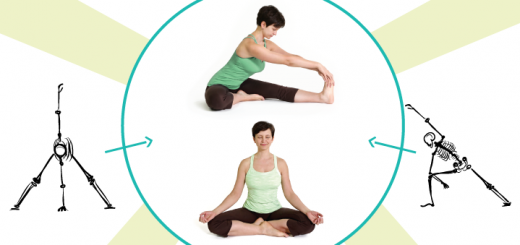Dosha-specific health issues and factors that aggravate them
1Imagine yourself attending a hot yoga class. Your body temperature will increase as you move through the poses (the external quality of heat will increase internal heat). The body will try to balance the increase in heat by perspiring and cooling itself down; this is a natural process of restoring the internal balance. However, if you then eat a hot and spicy meal, scramble at work to meet a deadline, and have an argument with someone close to you, all while it’s 90 degrees outside, this might create an excess of heat within your system. It would be particularly problematic if you are already pitta dominant and engage in those kinds of activities day after day. This type of interaction with the environment can aggravate anyone’s pitta and lead to irritability, diarrhea, rashes, trouble falling asleep, or any other symptoms of pitta imbalance. When we surround ourselves with the environment and engage in activities that possess the same qualities that we already have in abundance, it creates excess in the system and can manifest in various physical, physiological, and mental-emotional symptoms.

Here is a sample list of dosha-specific imbalances and potentially vulnerable areas.
|
VATA-RELATED IMBALANCES
|
PITTA-RELATED IMBALANCES
|
KAPHA-RELATED IMBALANCES
|
If you are experiencing one or more of the dosha-specific imbalances listed above, it is helpful to analyze your environment and habitual activities to see whether they contribute to your health challenges. Here is a sample list of environments and activities that can lead to dosha imbalance.
|
FACTORS THAT AGGRAVATE VATA
|
FACTORS THAT AGGRAVATE PITTA
|
FACTORS THAT AGGRAVATE KAPHA
|
If we pay conscious attention to the choices we make, activities we engage in, and foods we eat, we can restore and maintain the balance of fundamental qualities within our systems. A. G. and Indra Mohan express this idea beautifully in their book Yoga Therapy: A Guide to the Therapeutic Use of Yoga and Ayurveda. They write: “The cornerstone of the approach of Ayurveda to restoring or maintaining health and balance is this: We can intelligently change the qualities and functions of our body by controlling our interactions with our environment and by altering the food we eat” (1).

Some activities and environments are easier to change than others. For example, you can change what you have for dinner, what you do before bed, how much coffee you drink, and how much you move. It might be hard to establish a new habit, but it’s possible. Some things you cannot change, like the climate you live in, life events that happen, a work schedule set by somebody else, or the changing of the seasons. But even in environments where we are not in control, we can still take actions to balance out the dominant qualities of these environments. For example, if cold and damp weather makes you feel lethargic and gloomy, you can counteract it by making your home comfy cozy, getting a light therapy lamp, savoring hot beverages regularly, and in general engaging in activities that make you feel warmer and lighter. From the Ayurvedic standpoint, it all comes down to identifying qualities that you have in excess and counterbalancing them with opposite qualities. Feeling too heavy? Find what makes you feel lighter. Feeling too flighty? Find what makes you feel grounded. Feeling too irritated? Find what helps to cool your temper.
 Another critical point to remember is that vata is the primary mover, and it strongly impacts the other two doshas. If you end up with too much air in your system (from stress, travel, life changes, overstimulation, poor sleep, etc.), it can destabilize your pitta and kapha, as well. Think of it this way: too much oxygen can make the fire rage out of control and burn everything in sight (excess pitta). Too much wind can make huge waves on the surface of the ocean and flood the surrounding areas (excess kapha). Similarly, too much vata can lead to pitta-type disorders in a pitta-dominant person and kapha-type disorders in a kapha-dominant person.
Another critical point to remember is that vata is the primary mover, and it strongly impacts the other two doshas. If you end up with too much air in your system (from stress, travel, life changes, overstimulation, poor sleep, etc.), it can destabilize your pitta and kapha, as well. Think of it this way: too much oxygen can make the fire rage out of control and burn everything in sight (excess pitta). Too much wind can make huge waves on the surface of the ocean and flood the surrounding areas (excess kapha). Similarly, too much vata can lead to pitta-type disorders in a pitta-dominant person and kapha-type disorders in a kapha-dominant person.
Your yoga practice can help you balance out your inherent qualities, or it can aggravate them. If you already have too much heat in your system and do hot yoga that is challenging and competitive, it will aggravate your pitta. If you feel slow, sluggish, and heavy and only do restorative yoga, it will increase your kapha. If you feel restless and impatient and breeze through your yoga practice quickly while thinking about a million other things, it will increase your vata instead of balancing it. Next time, we will begin our conversation about the appropriate practices for specific types of ayurvedic imbalances. Spoiler alert! It has very little to do with which poses you choose and a lot to do with how you approach your practice—tune in!
[jetpack_subscription_form]
References
-
Yoga Therapy: A Guide to the Therapeutic Use of Yoga and Ayurveda for Health and Fitness by A.G. Mohan and Indra Mohan (affiliate link)
-
Yoga and Ayurveda: Self-Healing and Self-Realization by David Frawley (affiliate link)
- The Chemistry of Joy: A Three-Step Program for Overcoming Depression Through Western Science and Eastern Wisdom by H. Emmons, M.D. (affiliate link)




















Nice to read it .very knowle gele and informative .Will help in dealing with pt.